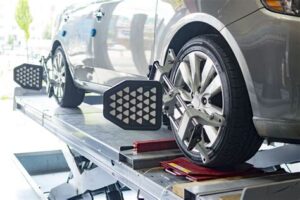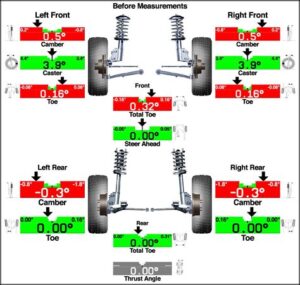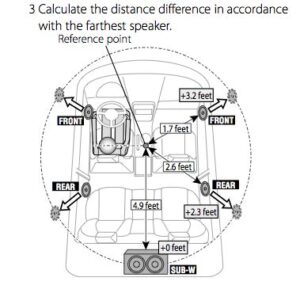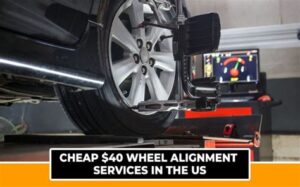Title: Achieve the Perfect Fit: The Importance of Car Hood Alignment
When it comes to your vehicle’s aesthetics and performance, car hood alignment plays a crucial role. A properly aligned hood not only enhances the visual appeal of your car but also contributes to its aerodynamics and overall safety. Whether you’re a seasoned car enthusiast or a casual driver, understanding the significance of hood alignment is essential for maintaining your vehicle’s integrity. In this article, we will explore the common indicators that signal your hood may need alignment, provide a detailed step-by-step guide on how to align it yourself, and discuss the tools and techniques required for achieving precise results. Additionally, we’ll highlight the numerous benefits of maintaining proper hood alignment and address frequently asked questions to help you keep your ride in top condition. Get ready to transform your car’s appearance and performance with expert insights on hood alignment!
Understanding The Importance Of Proper Car Hood Alignment
Proper car hood alignment is essential for multiple reasons, contributing to both the functional and aesthetic aspects of your vehicle. An incorrectly aligned hood can affect your car’s performance and safety, as well as its overall appearance.
One of the primary functions of the car hood is to protect the engine and other critical components underneath. If the hood is misaligned, it may not close securely, leaving gaps that can allow dirt, water, and debris to infiltrate the engine bay. This exposure can lead to damage, increased wear and tear, and potentially expensive repairs.
A well-aligned car hood also ensures proper airflow and cooling for the engine. Misalignment can disrupt the airflow dynamics, which might lead to overheating and decreased engine efficiency. Additionally, the hood plays a significant role in the vehicle’s aerodynamics; when it is not aligned correctly, it can increase wind resistance and reduce fuel efficiency.
From a safety perspective, an improperly aligned hood may not latch properly, posing a danger to the driver and other road users. A sudden hood release while driving can obstruct visibility, leading to hazardous situations. Therefore, maintaining proper alignment not only enhances safety but also boosts driver confidence.
The visual impact of hood alignment shouldn’t be underestimated. A misaligned car hood can detract from the overall appearance of your vehicle, making it look neglected and poorly maintained. Regular checks and adjustments can help maintain your car’s aesthetic appeal.
The importance of proper car hood alignment extends beyond mere aesthetics. It plays a crucial role in protecting crucial vehicle components, enhancing performance and safety, and ensuring your vehicle remains visually appealing.
Common Signs That Your Car Hood Needs Alignment
Proper alignment of your car hood is essential for both aesthetics and functionality. Here are some common signs indicating that your car hood may need adjustment:
- Uneven Gaps: Inspect the gap between your car hood and the adjacent body panels. If you notice uneven spacing, it may indicate misalignment.
- Hood Rubs or Scrapes: If your car hood is touching or rubbing against other parts of the vehicle when closed, this is a clear sign that it’s not aligned properly.
- Hood Latch Issues: Difficulty in securing the hood latch can suggest that the car hood is not seated correctly. If the latch won’t catch or is hard to operate, alignment may be needed.
- Wind Noise: Excessive wind noise while driving could indicate that your car hood isn’t sealed properly due to misalignment, affecting aerodynamics.
- Visible Damage: Look for any dents or warping on your car hood. Such damage might affect its alignment and overall fit.
If you notice any of these signs, it might be time to assess the alignment of your car hood and consider making adjustments for optimal performance and appearance.
Step-By-Step Guide To Aligning Your Car Hood
Proper alignment of your car hood is crucial for the overall aesthetics and safety of your vehicle. Follow this step-by-step guide to achieve perfect alignment:
- Assess the Current Alignment: Begin by visually inspecting the hood from various angles to identify any misalignment. Look for gaps or uneven spacing between the hood and the fenders.
- Gather Tools: You will need basic tools such as a wrench set, a screwdriver, and a tape measure for precise alignment measurements.
- Loosen the Bolts: Open the hood and locate the hinge bolts. Using your wrench, slightly loosen the bolts but do not remove them. This will allow for minor adjustments.
- Align the Hood: Carefully manipulate the hood into the desired position. Ensure that there is an even gap between the hood and the adjacent fenders. Use the tape measure to ensure consistency if needed.
- Tighten the Bolts: Once the hood is aligned properly, tighten the hinge bolts securely. Be cautious not to overtighten, as this may cause damage.
- Check Alignment Again: Close the hood gently and check the alignment one final time. Make any necessary adjustments by repeating the previous steps if needed.
Following these steps will help you align your car hood effectively, enhancing both the appearance and functionality of your vehicle.
Tools And Techniques For Accurate Car Hood Alignment
To achieve optimal car hood alignment, having the right tools and techniques at your disposal is crucial. Below are some essential tools you will need, along with effective techniques for aligning your car hood properly.
Essential Tools:
- Socket Wrench Set: A variety of socket sizes will help you access the bolts that hold the hood in place.
- Phillips and Flathead Screwdrivers: Useful for adjusting any screws and clips that may be misaligned.
- Measuring Tape: Ensure accurate measurements for alignment adjustments by measuring the distances between the hood and fenders.
- Laser Level: A laser level can be particularly effective for checking if the hood is level with other body panels.
- Alignment Pins: These can be used as guides during the alignment process to ensure everything lines up correctly.
- Plastic Trim Tools: These can help adjust or remove clips without damaging the surrounding paint or materials.
Techniques for Accurate Alignment:
- Visual Inspection: Start by visually inspecting the gaps between the hood and fenders. They should be uniform on both sides.
- Use of Measuring Tape: Measure the distance from the edge of the hood to the fender on both sides to ensure symmetry.
- Check the Hood Latch: Ensure that the hood latch is functioning correctly and is not causing misalignment by pulling the hood to one side.
- Adjusting Bolt Tension: Loosen the bolts on the hinges slightly, adjust the hood position, and then retighten the bolts. This allows for precise adjustments.
- Test Closing the Hood: After adjustments, test the hood to make sure it closes evenly and securely without gaps.
Utilizing these tools and techniques will help you ensure that your car hood is perfectly aligned, which not only enhances the vehicle’s appearance but also contributes to its overall performance and safety.
Benefits Of Maintaining Proper Car Hood Alignment
Maintaining proper car hood alignment is essential for several reasons that go beyond just aesthetics. Here are some key benefits:
- Enhanced Safety: A well-aligned hood ensures that it closes securely, preventing accidents or hazards caused by an improperly secured hood during driving.
- Improved Aerodynamics: Proper hood alignment reduces air resistance, potentially improving fuel efficiency and vehicle performance.
- Better Engine Functionality: An aligned hood ensures that it fits snugly, which can impact the overall performance of engine components that rely on proper airflow.
- Increased Resale Value: A vehicle with well-maintained body parts, including the hood, tends to have a higher resale value due to better overall condition and appearance.
- Preventing Further Damage: Addressing hood alignment issues promptly can prevent potential damage to the hood itself or nearby components, saving on costly repairs.
Keeping your car hood aligned is not only beneficial for the vehicle’s functionality and safety but also enhances its overall longevity and value.
Frequently Asked Questions
What is car hood alignment?
Car hood alignment refers to the proper positioning of the hood in relation to the body of the vehicle, ensuring even gaps, flushness, and ease of opening and closing.
Why is hood alignment important?
Hood alignment is crucial for both aesthetic and functional reasons. A misaligned hood can affect the vehicle’s appearance, lead to difficulties when opening or closing, and may hinder the effectiveness of safety features.
What are common signs of a misaligned car hood?
Common signs include uneven gaps between the hood and fenders, difficulty in opening or closing, and the hood appearing crooked when viewed from the front.
How can I check if my car hood is aligned?
You can check hood alignment by visually inspecting the gaps on either side and at the front of the hood, ensuring they are even and uniform, and testing the hood’s movement.
What tools do I need to realign my car hood?
Basic tools for hood realignment include a wrench or socket set to adjust hinges, a screwdriver, and possibly a tape measure for precise gap measurements.
Can I realign my hood myself or should I seek professional help?
While simple hood alignment adjustments can be done at home, it is advisable to seek professional help if there is significant damage or if you’re unsure about the process.
How often should I check my hood alignment?
It’s a good practice to check your hood alignment during regular vehicle maintenance or after any incidents that could affect body alignment, such as collisions or repairs.





